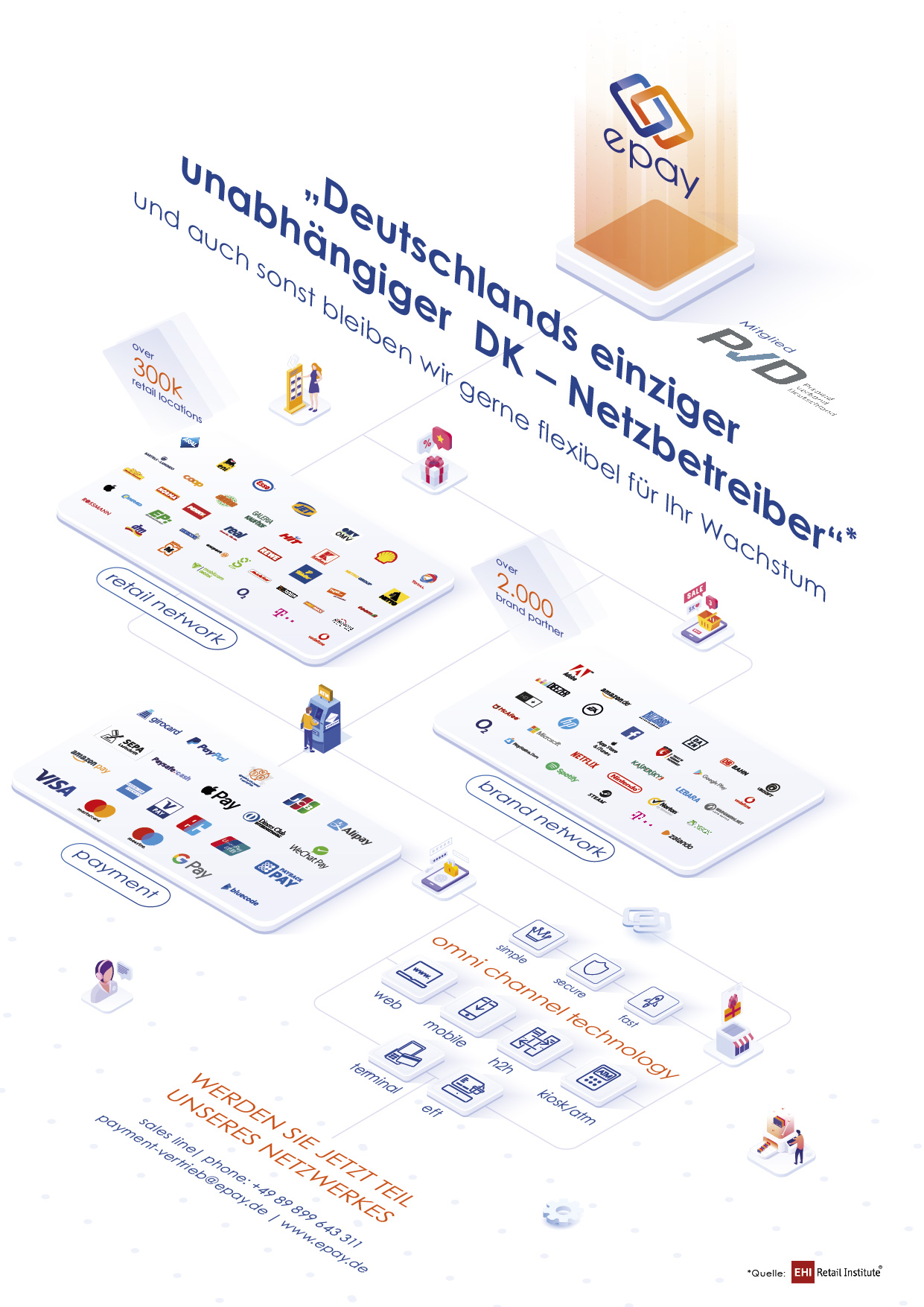Update
Payment Diversity as an Opportunity
Artificial intelligence, smart data, and blockchain – these big trends will be our constant companions in the years to come, driving the retail side as well as the prepaid industry on towards change and innovations.
And yet these developments will be meaningless without consumers and their needs, who will only transform these trends into long-term successes by sustained take-up of new propositions such as self-checkouts or mobile wallets. But what are the needs, the shopping and usage patterns that the industry should be mindful of, especially when considering prepaid and consumer payment methods?
Diversity is the Watchword in the Federal Republic of Germany
Germans show clear differences in their payment habits in comparison to their international counterparts. Diversity is the watchword in Germany: Cash alongside cashless payments, mobile wallets alongside bills in the wallet, coins alongside intelligent terminals such as smartphones or smartwatches, giro cards alongside credit cards, conventional alongside alternative payment methods. For example, our current consumer trend study shows that men use vouchers on the Internet as an alternative means of payment much more frequently (78 percent) than women (68 percent).
Diversity in current payment methods also expresses a disparate needs landscape within Germany, which must be comprehensively catered for in the range of payment options or through bespoke solutions targeted for individual retail trades. As the only independent DK (German Banking Industry Committee) network operator in Germany, epay has decided that it will offer all possible payment methods, both at the POS, mobile and in e-commerce for consumers and retailers as a 360° full-service provider.
We have therefore set out our solutions as a platform concept and can now offer acceptances for individual retailers—national as well as international—which work via different types of terminals as well as with cash register integration. This means we can offer acceptance of all current and future payment methods—regardless of whether the consumer is paying with a classic payment card or with a portable device such as a smartphone, and regardless of whether the payment medium interacts via magnetic strip, chip, NFC, barcode, or QR code.
Sadly, Uncertainty Still Prevails in the Federal Republic of Germany
The transition from coin to smartphone payment has begun; it is irrevocable and some trailblazers are already benefiting from the advantages of mobile payment. These trailblazers are found in particular among the younger 16 through 29 generation, according to a study conducted by the Allensbach Institute (public opinion polling) on behalf of Initiative Deutsche Zahlungssysteme e.V. in June 2018. More than half of them can envision paying with a smartphone, for example—but when the security aspects of these new payment types are mentioned, they too still have reservations at this point in time.
According to the study, these security concerns are shared by all age groups. The aim is therefore not only to respond to different consumer needs with a variety of offers, but also to jointly develop the German market and, through investment and qualitative added-value products, to bring this market over to the “digital payment” side. This will call for information campaigns and application examples that will create added value and help to reduce uncertainty. Mobile payment needs to be much more closely linked with products such as loyalty and couponing. This applies just as much to e-commerce and to future scenarios, for example when your electric car automatically pays for its electricity at the charging station, rendering the payment process “invisible.” This makes more innovation and, above all, a great deal of collaboration between the various players on the market a necessity.
Share article
Press contact

Jana Weisshaupt
PR & Communications
+49 89 899643-499
j.weisshaupt@epay.de

